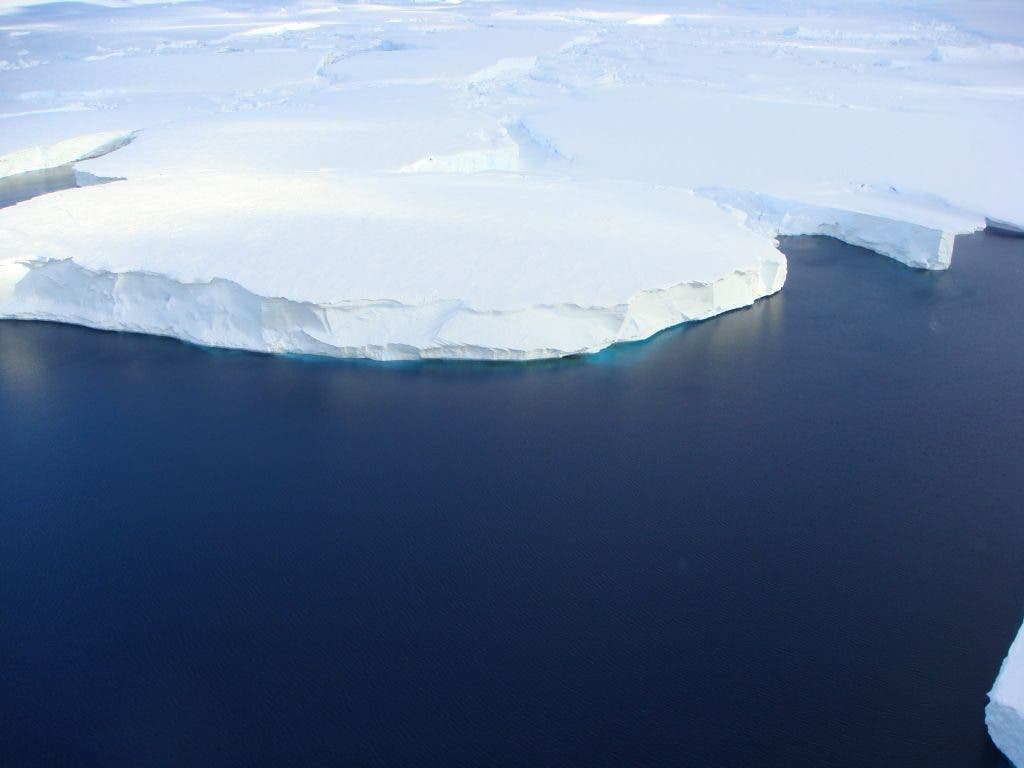Researchers from NASA, Imperial College in London and Texas University have discovered two seafloor troughs that allow warm ocean water to infiltrate and accentuate the melting of Totten Glacier, East Antarctica’s largest glacier. This could have massive implications not only for the Antarctica ice, but for global sea levels.

To say that Totten Glacier is huge is almost an understatement; just so you can get an idea, if it would completely melt, global sea levels would rise by at least 11 feet (3.3 meters). Naturally, studying it, along with the surrounding glaciers in the area is extremely important to understand the effects that climate change has not only on Antarctica, but on our entire planet.
Last year, researchers found that warm ocean water was infiltrating the Western areas of Antarctica, and now, the same thing seems to be happening in the East.
“The idea of warm ocean water eroding the ice in West Antarctica, what we’re finding is that may well be applicable in East Antarctica as well,” said co-author Martin Siegert.

Given its size, scientists were expecting Totten to be much more stable and resistant to local melting. But this new finding shows otherwise.
“Totten Glacier and the East Antarctic Ice Sheet are a much more interesting and dynamic part of the sea level rise story than we’d previously thought,” said co-author Dustin Schroeder, a scientist at NASA’s Jet Propulsion Laboratory, Pasadena, California. Schroeder helped analyze data from an ice-penetrating radar to demonstrate that ocean water could access the glacier through the newfound troughs.
Water dynamics in Antarctica is strictly dependent on temperature and salinity; generally, warmer water rises to the surface as it is more buoyant, but in Antarctica, warm salty water still sinks lower because it is heavier. Seafloor valleys can direct this warmer water to the bottom of glacier, where it can greatly accentuate melting. The newly discovered troughs are deep enough to give the deep warm water access to the huge hole underneath the glacier.
Co-author Professor Martin Siegert, Co-Director of the Grantham Institute at Imperial College London, said:
“It’s only one glacier, but it’s changing now and it is significant for sea levels globally. The 3.5 metre rise may take several centuries to complete, but now the process has started it is likely irreversible. This is another example of how human-induced climate change could be triggering major changes with knock-on impacts that will be felt globally.”
The problem is that we still don’t fully understand how this changes the glacier dynamic in the area; scientists are gathering direct data and they are also using computer models to integrate the data and predict what will happen – but there is still a degree of uncertainty.
“Once a certain region starts to change, the implications for the connected ice are potentially significant. We are using computer modelling to understand whether changes in Totten Glacier could lead to changes in both adjacent and more distant places in Antarctica. While this work needs to be undertaken, the change at Totten Glacier itself is significant and concerning.”
Even so, there are some areas of which we know nothing about – scientists call them the poles of ignorance.
“These include two ‘poles of ignorance’ – spots on Antarctica where you can stand and be at least 200km from the nearest data point relating to the continent beneath the ice,” they wrote.
Journal Reference: Ocean access to a cavity beneath Totten Glacier in East Antarctica. J. S. Greenbaum, D. D. Blankenship, D. A. Young, T. G. Richter, J. L. Roberts, A. R. A. Aitken, B. Legresy, D. M. Schroeder, R. C.Warner, T. D. van Ommen, and M. J. Siegert. Nature Geoscience. Published Monday 16 March, 2015. DOI: 10.1038/ngeo2388.


